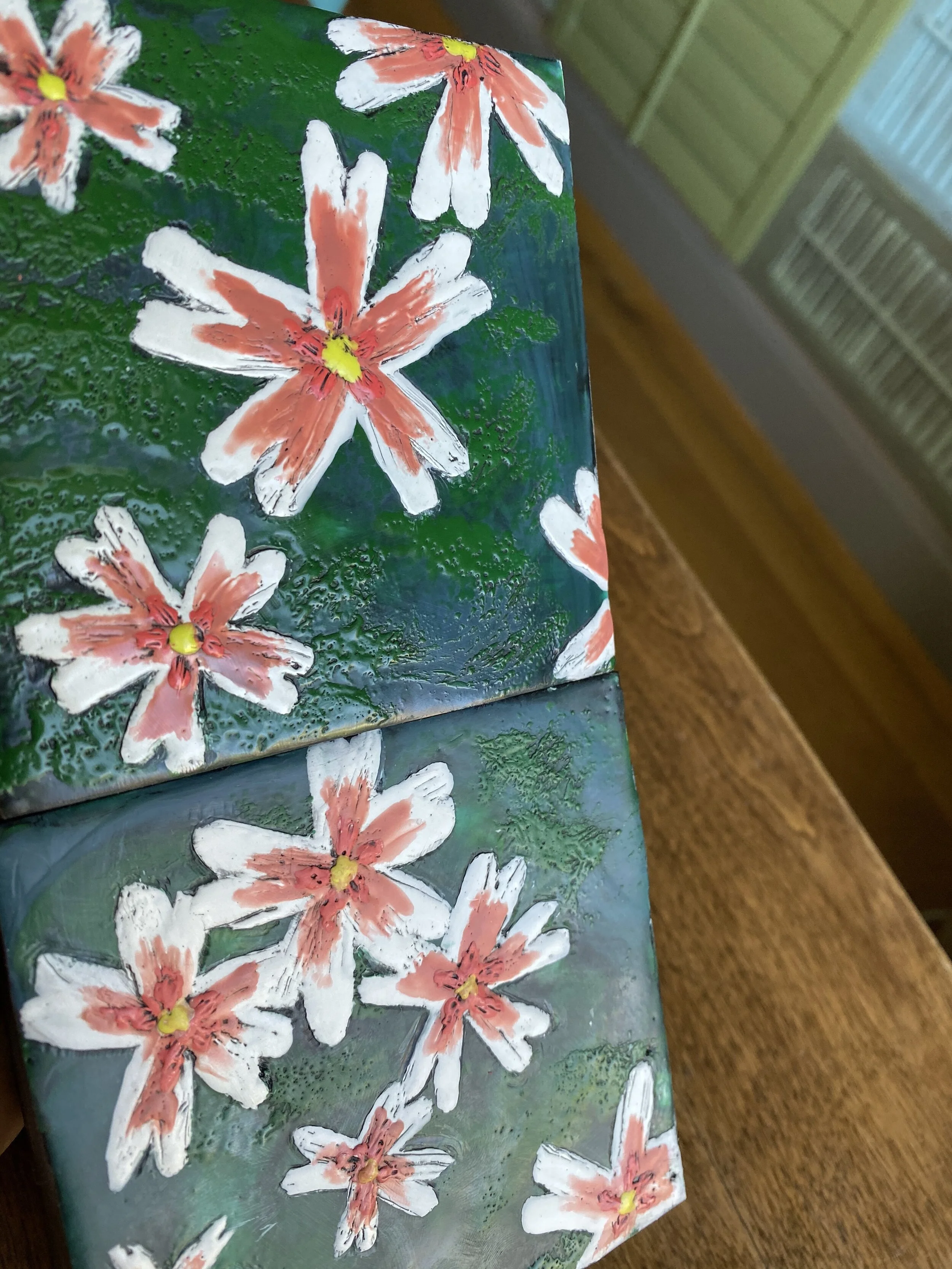What is Encaustic?
Encaustic is a greek word meaning “to burn in or fuse.” Encaustic medium is a mix of natural bees wax and dammar resin which is crystallized tree sap. Alone it is fairly transparent and can be used as an adhesive for collage. It can also be combined with pigments for incorporating color. The medium is melted using a griddle or encaustic hot plate and then applied using a brush or other tools to wooden panels or other desired objects. Each layer must be fused to the previous layer with heat using a blow torch or heat gun. It is an ancient art medium and some encaustic paintings are thousands of years old.
How to care for your Encaustic artwork
Consistent Temperature: Hang and store at normal room temperatures. Avoid freezing and extremely hot temperatures, was will melt at 150 degrees.
Avoid Direct Sunlight: Keep all artwork out of direct sunlight.
Transporting a painting: Cover the face of the painting with wax paper during transportation before any other forms of packaging material or they may leave an imprint on the surface.
Framing: Encaustic does not need to be protected by glass. A floater frame is an option to help protect the edges of the painting.
Curing: During the first 6-12 months, as the wax cures, an encaustic painting may develop bloom. Bloom is a naturally occurring hazy white residue. It may also occur if a painting is exposed to cold. It can be easily removed by buffing the surface of the painting. Encaustic paintings can be buffed to a high gloss using a soft, lint-free cloth or pantyhose. I like to use old eyeglass cleaning cloth. Avoid buffing areas with gold leaf or any areas with considerable texture. Once they have cured, they will more readily shed dust and keep their polished look.
Bloom
The top painting has been buffed with a eye glass cloth. The similar painting on the bottom has not. You can see the difference in shine.

